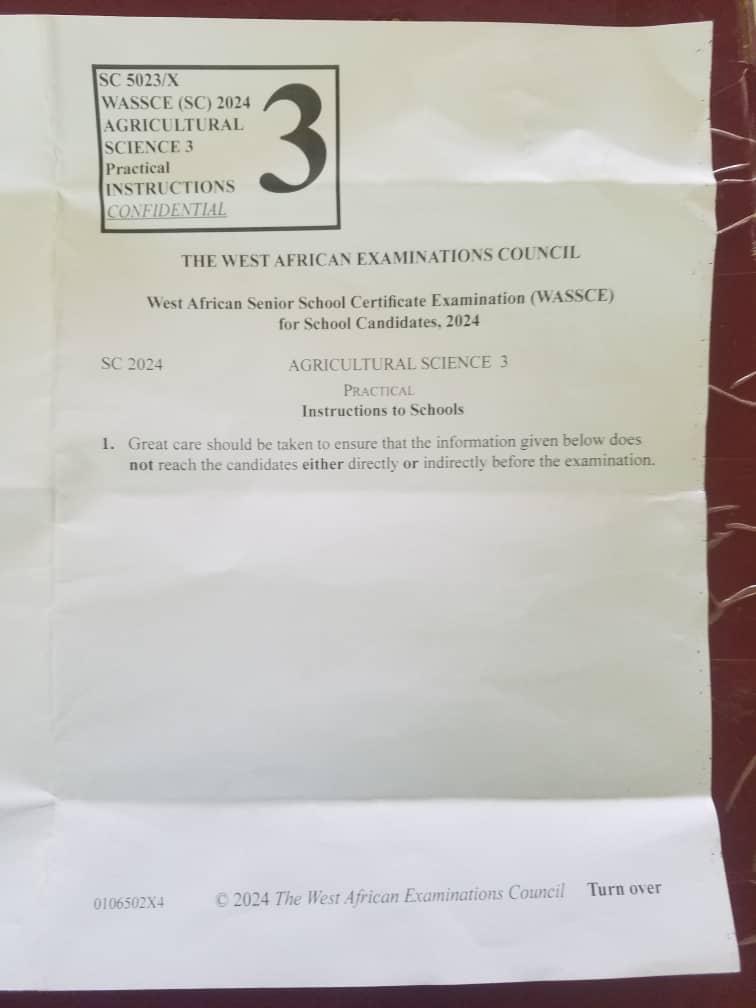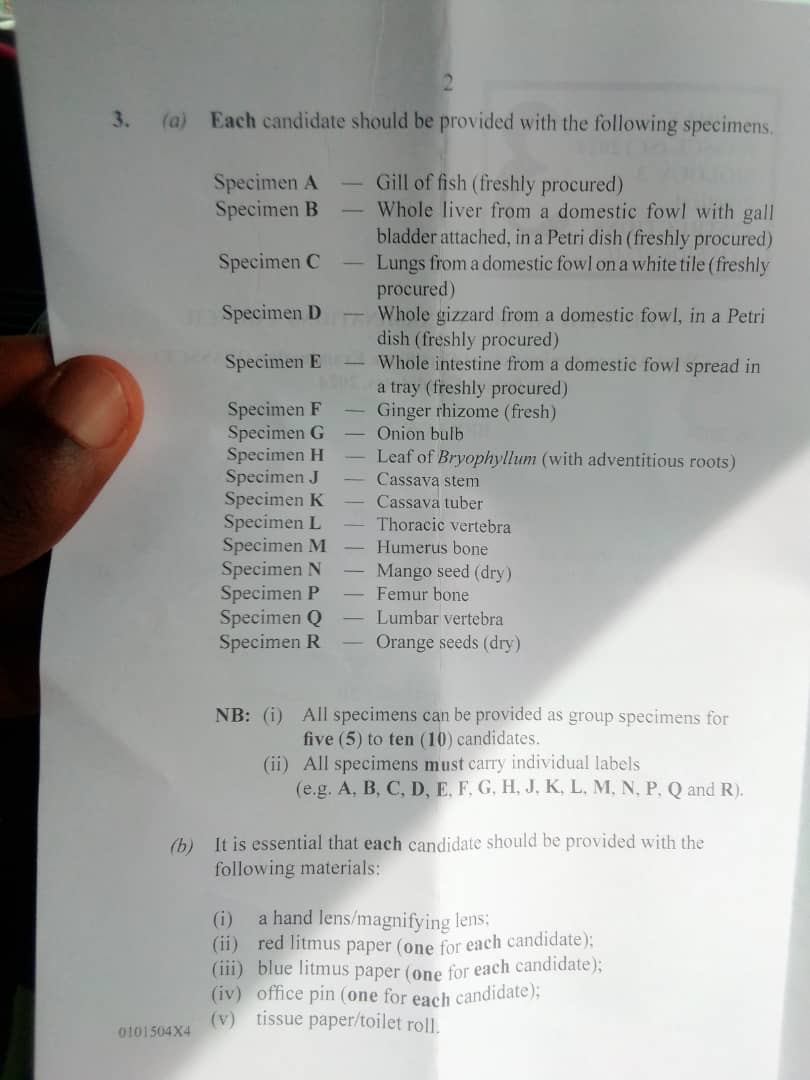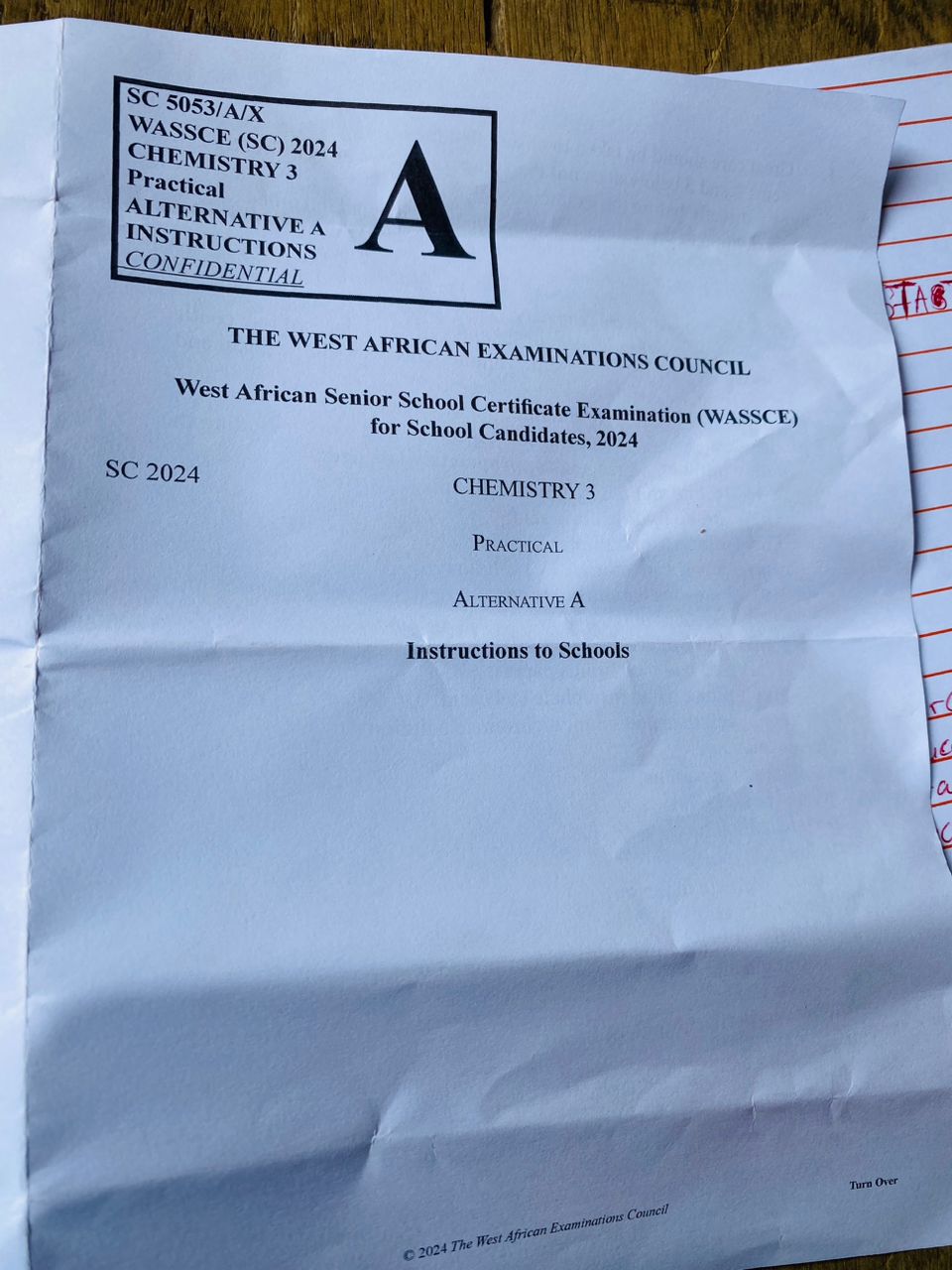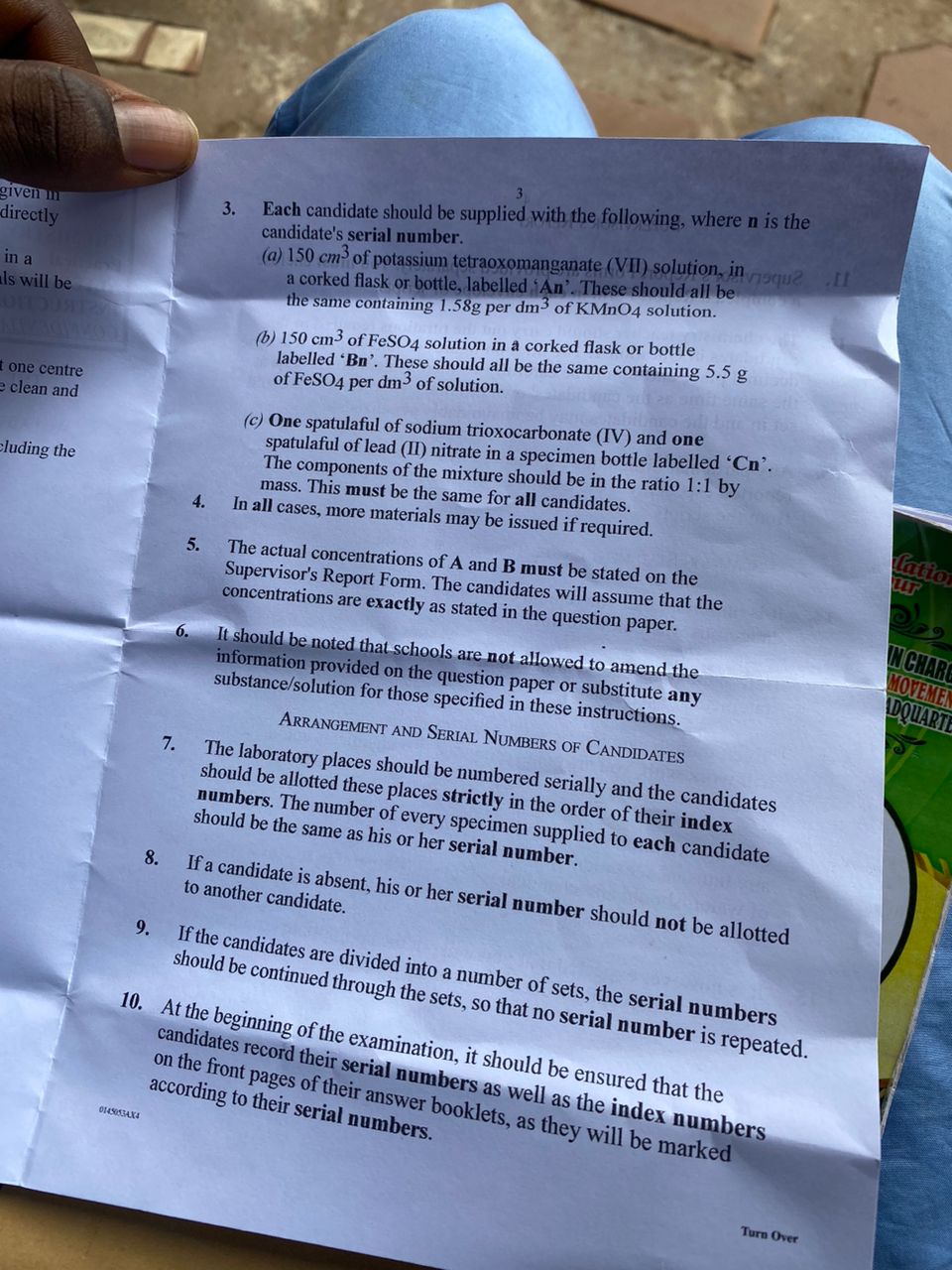Join Our Telegram Channel
Join Our Whatsapp Group
2024 WAEC PRACTICAL SPECIMENS: The West African Examinations Council (WAEC) 2024 May/June exams are approaching, and practical exams are a crucial component for many subjects. Being prepared with knowledge of potential specimens can significantly boost your confidence and performance.
This article provides insights for the 2024 WAEC practical specimens across various subjects, empowering you to excel in your exams.
What are WAEC Practical Specimens?
WAEC practical exams involve hands-on activities and tests based on specific specimens provided during the exam. These specimens can be biological samples, agricultural equipment, or other relevant materials depending on the subject.
BIOLOGY PRACTICAL SPECIMEN
CHEMISTRY PRACTICAL SPECIMEN
AGRIC PRACTICAL SPECIMEN
Instructions to Schools:
1. Great care should be taken to ensure that the information given below does not reach the candidates either directly or indirectly before the examination.
2. (a) The provision of specimens, materials and equipment for the test is your responsibility.
(b) (i) Where a specimen is not readily available in sufficient quantity. it should be shared among small groups of candidates.
(ii) Each candidate should be provided with the following specimens labelled accordingly:
A: Ranging pole:
B: Arrow;
C: Measuring tape;
D: Wooden peg.
- For specimens E, F and G, you are requested to get some quantity of dry sand, dry clay (ground) and dry loam (ground) respectively.
- Get three capillary tubes, label each of them E, F and G.
- Close the lower ends of each of the capillary tubes with a plug of cotton wool.
- Put the:
(i) dry sand into the capillary tube labelled E;
(ii) dry clay (ground) into the capillary tube labelled F;
(iii) dry loam (ground) into the capillary tube labelled G.
- Shake or tap the ends of the capillary tubes to make sure that the particles are tightly packed/settled in each of the capillary
tubes.
- Get a water trough and put water in it until it is half full.
- Set the capillary tubes securely in the trough.
- Leave the setup to stand for 24 hours before the examination.
H: Maize weevil;
I: Bean beetle;
J: Grasshopper;
K: Cotton stainer;
L: Tilapia (whole and fresh);
M: Hay;
N: Fish meal.
REPORT FORM
3. Report Forms are provided separately on which you are requested to:
(a) supply details of the specimens and materials provided;
(b) report on any particular difficulties experienced by any candidate especially if the examiner would be unable to discover these from the scripts;
(c) make and record experimental observations.
4. You must enclose a completed Report Form in each envelope of scripts.



MORE WILL BE UPDATED ONCE THEY’RE AVAILABLE.
LOADING...





